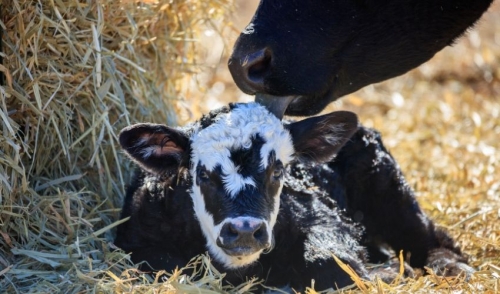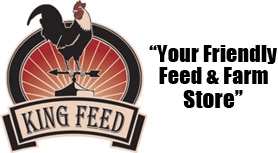{article.name}
Weaning a Calf

- Share this:
- Share on Facebook
- Pin on Pinterest
- Tweet on Twitter
Weaning a calf can be a delicate decision and should be made with several considerations in mind. When it is time for weaning, proper nutrition and a gentle process is essential to ensure successful weaning for healthy calves and cows.
When to Wean
The best age for weaning calves depends on many factors. Most calves will naturally wean from 9-11 months old, but it is not always desirable or practical to wait for self-weaning. Ideally, most beef calves are weaned when 7-8 months old, while dairy calves may be weaned as early as 6-8 weeks. Different factors to consider when deciding on weaning age include…
- Animal breed
- Overall cow and calf condition and health
- Supplemental feed costs
- Forage quality and nutrition
- Conception timing and rates
- Animal purpose (production or auction)
Geography and climate must also be considered when weaning calves. In harsher areas or when droughts or other tough climates result in poor forage, it may be advisable to wean calves earlier so cows have a longer time to regain their condition before winter. In richer areas with more nutritious pastures, calves might be weaned later.
Tips for Weaning Calves
Whenever you decide to wean your calves, it is important to do so in responsible, careful manner to reduce stress. Weaning is naturally stressful, and anxious, stressed calves and cows can rapidly lose condition and productivity. Anxiety will also make the animals more vulnerable to parasites and illnesses. By weaning more carefully, you can keep the animals calmer and healthier for a thriving, productive herd.
- Handle and be around the cows and calves regularly before weaning. Getting them accustomed to your presence will make them less stressed when you are present to separate them for weaning.
- Separate the cows and calves as carefully as possible. If necessary, move them out of sight and earshot of one another. This more forcible weaning will likely increase stress and cause greater anxiety, but it can be effective for smaller herds or larger properties.
- Inspect each animal closely either just prior to weaning or when they are being separated. This is a good opportunity to check overall condition and to deworm and vaccinate calves. Vitamin boosters can also be provided as needed.
- Separating cows and calves into adjacent pastures can lower stress, as the animals can still see, smell, and hear one another, though they cannot intermingle for nursing.
- Leaving a few dry cows in with the calves can lower their initial anxiety while weaning, without the risk of cross-suckling that can prolong overall weaning.
- If you would rather leave the cows and calves together, consider using nose plates on the calves to minimize nursing. Nose plates will need to be left in place for 7-14 days until the calves have ceased nursing attempts.
- Offer appropriate starter feed for the separated calves, and monitor their feeding habits to be sure each animal has adequate access to feed. The exact nutritional composition of the feed will vary based on the animals’ breed, age, weight, and overall health.
- Place calf feeders along the fence line of their new pasture. The calves will wander along the edges of the enclosure as they seek a way to reconnect with their mothers, and fence line feeders will be easier to find than feeders in the center of the pasture.
Ultimately, there is no absolutely correct way to wean every calf, and you need to choose the options that work best for your animals, operation size, and budget. By taking care to make weaning as stress-free as possible for the cows and calves, you can ensure a healthier, more productive herd and each breeding season will be a beneficial and profitable one.
Special Offers
We are constantly adding new specials to our site. Be sure to check back often!



Comments